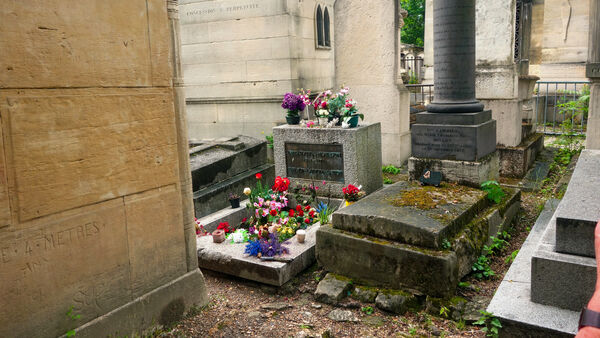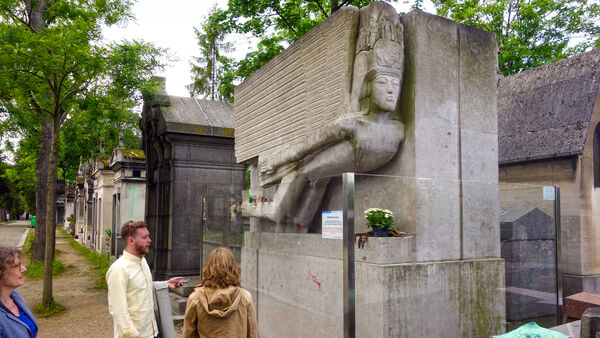Fatal Attraction: Europe’s Top Cemeteries
By Rick Steves


When I'm traveling in Europe, I often see stupid "torture museums" that are cleverly marketed. They make lots of money by appealing to the lowest desires of dumbed-down travelers, even though none of them has any real artifacts. If you're looking for the macabre side of Europe, skip these hokey rip-offs and visit a cemetery — they're authentic, artsy, and oozing with history. Here are some of my favorites.
Père Lachaise Cemetery (Paris)
Littered with the tombstones of many of the city's most illustrious dead, Père Lachaise is your best one-stop look at Paris' fascinating, romantic past residents. The cemetery is relatively new, having opened in 1804. Today, this city of the dead (pop. 70,000) still accepts new residents, probably those who had heart attacks after learning the price: A 21-square-foot plot costs more than $15,000.
The cemetery holds the remains of Frédéric Chopin, Molière, Edith Piaf, Gertrude Stein, Héloïse and Abélard, and many more — but the grave of rock legend Jim Morrison is perhaps its most visited tomb. An iconic, funky bust of the rocker, which was stolen by fans, has been replaced with a more toned-down headstone. Another hot spot is Oscar Wilde's final resting place. This writer and martyr to homosexuality is mourned by "outcast men" (as the inscription says) and by wearers of heavy lipstick, who used to cover his gravestone with kisses (it's now protected by a plastic barrier).
Catacombs of Priscilla (Rome)
Of the countless catacombs honeycombing the ground just outside Rome's ancient city walls, only five are open to the public. While most tourists and nearly all tour groups go out to the ancient Appian Way to see the famous catacombs of San Sebastiano and San Callisto, the Catacombs of Priscilla (on the other side of town, northeast of the main train station) are less commercialized and crowded, and just feel more intimate, as catacombs should.
Visitors enter from a convent and explore the result of 250 years of tunneling that occurred from the second to the fifth centuries. The underground tunnels, while empty of bones, are rich in early Christian graffiti — such as doves, peacocks, and fish — which functioned as a secret language. You'll see a few thousand of the 40,000 niches carved here, along with some beautiful frescoes, including what is considered the first depiction of Mary nursing the baby Jesus.
Highgate Cemetery (London)
Located in a tea-cozy-cute neighborhood in north London, this Victorian cemetery represents a fascinating, offbeat piece of local history. Built as a private cemetery, Highgate was the fashionable place to bury London's wealthy dead in the late 1800s. It has themed mausoleums, vampire lore, and several high-profile residents in its East Cemetery, including Karl Marx, George Eliot, and Douglas Adams. The tomb of "Godfather of Punk" Malcolm McLaren (former manager of the Sex Pistols) is often covered with rotten veggies. The West Cemetery has less star power (its most famous grave, singer George Michael's, is off-limits), but a creepier vibe that makes this half's required guided tour worthwhile.
Monumental Cemetery (Milan)
Europe's most artistic and dreamy cemetery experience, this grand place was built just after Italy's unification to provide a suitable final resting spot for the city's "famous and well-deserving men." The Monumental Cemetery is a long walk from Milan's Garibaldi Metro station, but it's worth it. Any cemetery is evocative, but this one — with its super-emotional portrayals of the deceased and their heavenly escorts (in art styles circa 1870–1930) — is in a class by itself. It's a vast garden art gallery of proud busts and grim reapers, heartbroken angels and weeping widows, too-young soldiers and countless old smiles, frozen on yellowed black-and-white photos.
Kaisergruft (Vienna)
For centuries, Vienna was the heart of a vast empire ruled by the Habsburg family, but visiting their imperial remains is not as easy as you might imagine. These original organ donors left their bodies — about 150 in all — in the Kaisergruft (the Imperial Crypt at the Capuchin Church, not far from Vienna's famous Opera House), their hearts in the Augustinian Church (vaults closed to public), and their entrails in the crypt below St. Stephen's Cathedral.
Unless you have a thing for organs preserved in alcohol, visit the Kaisergruft. You'll find the tombs of all the Habsburg greats here. Flanking the appropriately austere military tomb of Emperor Franz Josef are the tombs of his son, the archduke Rudolf, and his wife, Empress Elisabeth. Rudolf and his teenage mistress supposedly committed suicide together, and it took considerable legal hair-splitting to win Rudolf a place in this consecrated space. Elisabeth, a 19th-century version of Princess Di, always gets the "Most Flowers" award.
When traveling, if you become dead tired of dusty art museums, rude waiters, or never-ending ticket lines, don't give up the ghost. Add some life to your European experience — visit a cemetery.

